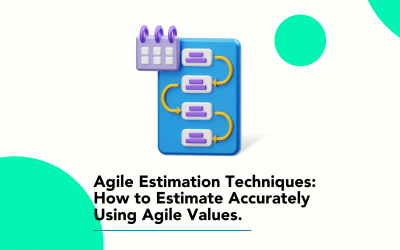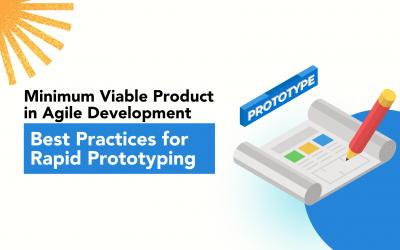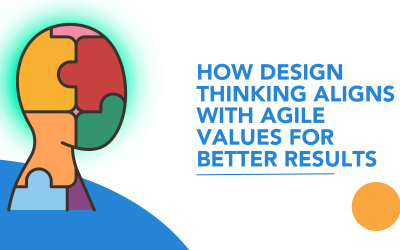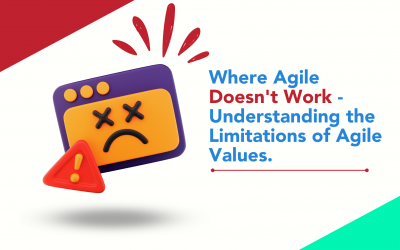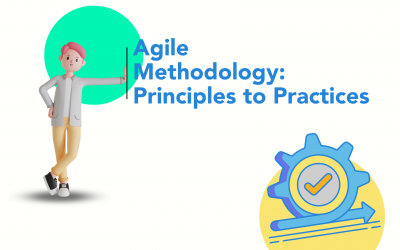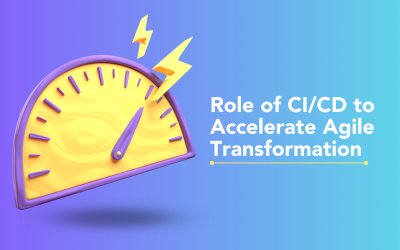BLOGS
Come! Be a thought leader with us.
This is where we are going to speak our mind and generate conversation on latest issues in agile practice, push our take on challenges in the agile space, and encourage you to think and engage with us.
FREE FOR 30 DAYS. NO CREDIT CARD REQUIRED.
Agile Estimation Techniques: How to Estimate Accurately Using Agile Values
Are you struggling with project planning and management? Agile estimation techniques may just be what you need. Agile estimation techniques are closely tied to Agile values such as communication, collaboration, and transparency, and can lead to better project outcomes by creating a shared understanding of the scope and complexity of a project. Some popular Agile estimation techniques include Planning Poker, Affinity Mapping, and Relative Sizing. Planning Poker is a great way to encourage team collaboration, transparency, and communication. It involves using cards to estimate tasks or user stories with each team member providing an estimate. Affinity Mapping is another technique that allows teams to group tasks based on similarities in size or complexity, leading to more accurate estimates. Relative sizing, on the other hand, compares tasks based on relative size, not absolute terms, making it easier for teams to estimate accurately. By implementing these techniques, teams can work together to create accurate estimates that ultimately lead to better project outcomes.
Minimum Viable Product in Agile Development – Best Practices for Rapid Prototyping
Prototyping is crucial in product development to identify flaws and issues early on. Rapid prototyping creates multiple prototypes quickly, emphasizing user feedback, while MVP develops a product with just enough features to validate an idea. Rapid prototyping is essential in the MVP process, allowing teams to test assumptions about user needs efficiently. Prioritizing user feedback, testing multiple iterations, using low-fidelity prototypes, involving stakeholders, and staying focused on core value proposition are key best practices. Rapid prototyping can save time and resources, mitigate risk, and develop more user-centered products.
How Design Thinking Aligns with Agile Values for Better Results
Design Thinking and Agile are methodologies for businesses to quickly adapt to market demands. Design Thinking has five stages: Empathy, Define, Ideate, Prototype, and Test, and is human-centered. Agile prioritizes communication, adaptability, and quick iteration. Both emphasize collaboration, rapid iteration, continuous feedback, user-centered design, problem-solving, and innovation. Combining these methodologies results in improved user experience, faster time-to-market, and increased team collaboration. The unique process of combining Design Thinking and Agile involves understanding the user’s needs, defining the problem, ideating and iterating, prototyping, and testing.
Where Agile Doesn’t Work – Understanding the Limitations of Agile Values
Agile transformations are taking place in organizations, but not every industry or organization is a good fit for Agile. It is important to assess whether Agile is the best approach for the specific industry and problem. Understanding the limitations of Agile values will help organizations make informed decisions about their transformation journey. One of the limitations of Agile is that it may not work well in regulated industries or large organizations with distributed teams. In these cases, a hybrid approach that combines Agile with other project management methodologies may be more appropriate. Additionally, a more structured approach may be necessary for projects where the requirements are well-defined, the scope is narrow, and there is little room for deviation from the original plan.
Agile Methodology: Principles to Practices
Agile methodology is a flexible and adaptable project management approach that prioritizes customer satisfaction, teamwork, and adaptability. It involves breaking down projects into smaller iterations called sprints, where cross-functional teams work together to develop and test a working version of the project while continuously communicating, giving feedback, and adapting to changing requirements. In this article, we will explore the key characteristics of Agile methodology , its value, principles, practices and frameworks.
Role of CI/CD to accelerate Agile Transformation
Learn about the role of CI/CD in accelerating Agile transformation with this informative blog post. Using the analogy of a baker, the article explores how software development, like baking, requires experimentation and testing but ultimately needs consistency and reliability. CI/CD enables this through the automation of repetitive tasks such as building, testing, and deploying software. The article delves into the key shifts required to implement CI/CD successfully, such as a change in culture, embracing automation, and collaboration across development, testing, and operations teams. Discover how CI/CD can help teams deliver software more frequently, increase software quality, and reduce the risk of releasing buggy software.
